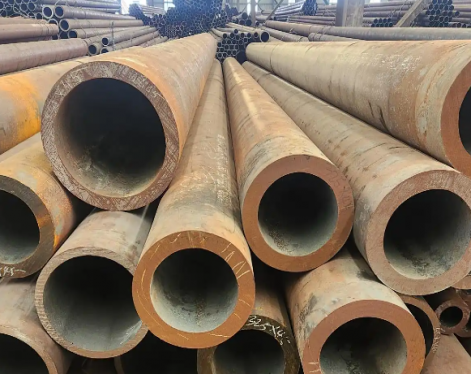Welded steel pipes, also called welded pipes, are steel pipes made by welding steel plates or steel strips after crimping. Welded steel pipes have simple production process, high production efficiency, many varieties and specifications, and less equipment, but their general strength is lower than seamless steel pipes. Since the 1930s, with the rapid development of high-quality strip continuous rolling production and the advancement of welding and inspection technology, the quality of welds has been continuously improved, and the variety and specifications of welded steel pipes have been increasing. Seam the steel pipe. Welded steel pipes are divided into straight seam welded pipes (ERW Steel Pipe) and spiral welded pipes according to the form of welds.
Straight seam welded pipe has simple production process, high production efficiency, low cost and rapid development. The strength of spiral welded pipes is generally higher than that of straight seam welded pipes. A narrower blank can be used to produce welded pipes with larger pipe diameters, and a billet with the same width can be used to produce welded pipes with different pipe diameters. But compared with the straight seam pipe of the same length, the weld length is increased by 30-100%, and the production speed is lower.
Therefore, most of the smaller diameter welded pipes adopt straight seam welding, and the large diameter welded pipes mostly adopt spiral welding.
Tips: A106 pipe is formulated specifically for high-temperature and high-pressure service, usually in power generation applications. High-pressure, high-heat service environments put added stress on pipe, so seamless pipe types are preferred in those settings since they’re at less risk of failure under stress than their welded counterparts.
Straight seam welded pipe has simple production process, high production efficiency, low cost and rapid development. The strength of spiral welded pipes is generally higher than that of straight seam welded pipes. A narrower blank can be used to produce welded pipes with larger pipe diameters, and a billet with the same width can be used to produce welded pipes with different pipe diameters. But compared with the straight seam pipe of the same length, the weld length is increased by 30-100%, and the production speed is lower.
Therefore, most of the smaller diameter welded pipes adopt straight seam welding, and the large diameter welded pipes mostly adopt spiral welding.
Tips: A106 pipe is formulated specifically for high-temperature and high-pressure service, usually in power generation applications. High-pressure, high-heat service environments put added stress on pipe, so seamless pipe types are preferred in those settings since they’re at less risk of failure under stress than their welded counterparts.









